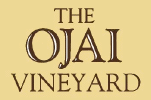

FALL 2004
Our last newsletter touched on the influences of soil, exposure and climate on wine grapes. The French use the term "terroir" to describe the distinctiveness a particular spot gives to a wine. And although it may seem a little fanciful at first, anyone involved with grape growing and wine making knows terroir is an authentic phenomenon--not a mere marketing ploy of the French bureaucracy. At The Ojai Vineyard we revel in the distinctiveness of vineyard sites and in the wines that are made from them. Hence a major winemaking objective here is to tread lightly winemaking-wise so that a vineyard's unique characteristics are not lost in the process of turning grapes into wine. In this newsletter I wanted to touch upon the influences of winemaking on how (or if) terroir is expressed in the final product.
Over the years we've tried to assess each winemaking step and its influence on the wine. It's not so simple, as there are hundreds of small steps--all of which have varying effects. And, some of these effects aren't apparent for many years. (Needless to say, the review and assessment is ongoing and unlikely to ever end.) Paramount is yield: you can't make wines that express their vineyard heritage unless you're willing to accept a very small crop per acre. Another step that strongly affects the expression of terroir is deciding when to pick grapes. As they ripen, grapes go from acidic and mono-dimensional to rich and flavorful and then to prune-y and dull. There are standard measures of ripeness, sugar and acidity, that we all use, but they are only rough gauges of true physiological ripeness, so there is plenty of debate over when to pick. The issue is complicated by how carefully the growing was done. We've always picked very ripe grapes, but there is a huge trend to pick at super ripe levels. This is troubling as the distinctiveness of a spot is lost when one picks too ripe--the wines all taste the same-prune-y and raisin-y. Batonage, a century's old practice of stirring the yeast lees at the bottom of the barrel, is another example. It can be a bad thing when overdone--the distinctive character of the vineyard is lost, and the wine tastes only like stirred yeast.
The point is that there are many processes in winemaking, like anything else for that matter, which are neither bad nor good. It's more a matter of what the intentions and consequences of a practice have on the wine. We have tasted a few too many wines that mimic some of the aromas and flavors of great wines, and get many favorable reviews, yet are soulless because they do not possess any sense of distinctiveness or terroir. My concern is that too many people are trying to shape and manipulate wines to make them taste like what they think the pundits will praise, rather than working to express authenticity.
Adam Tolmach

